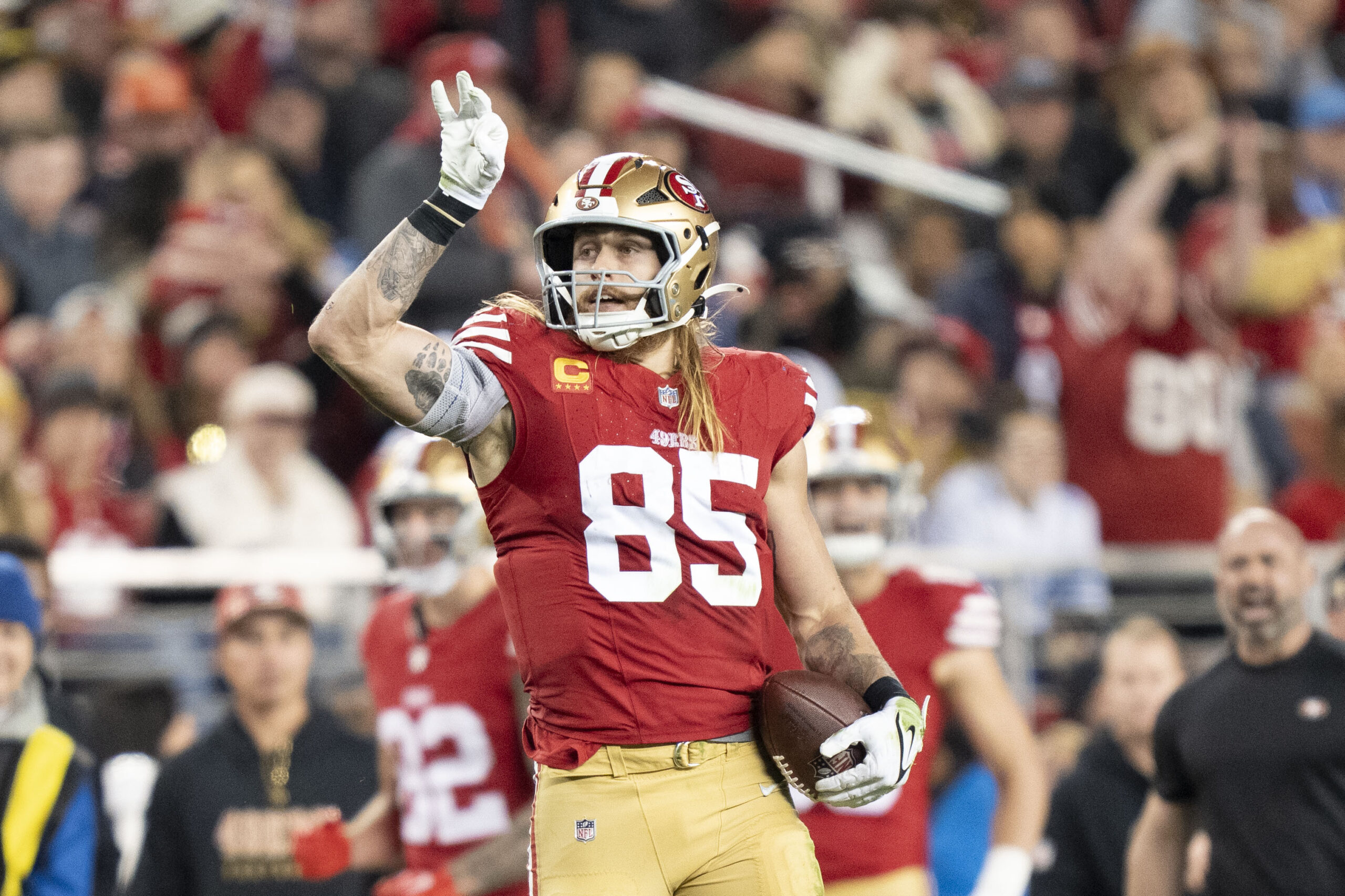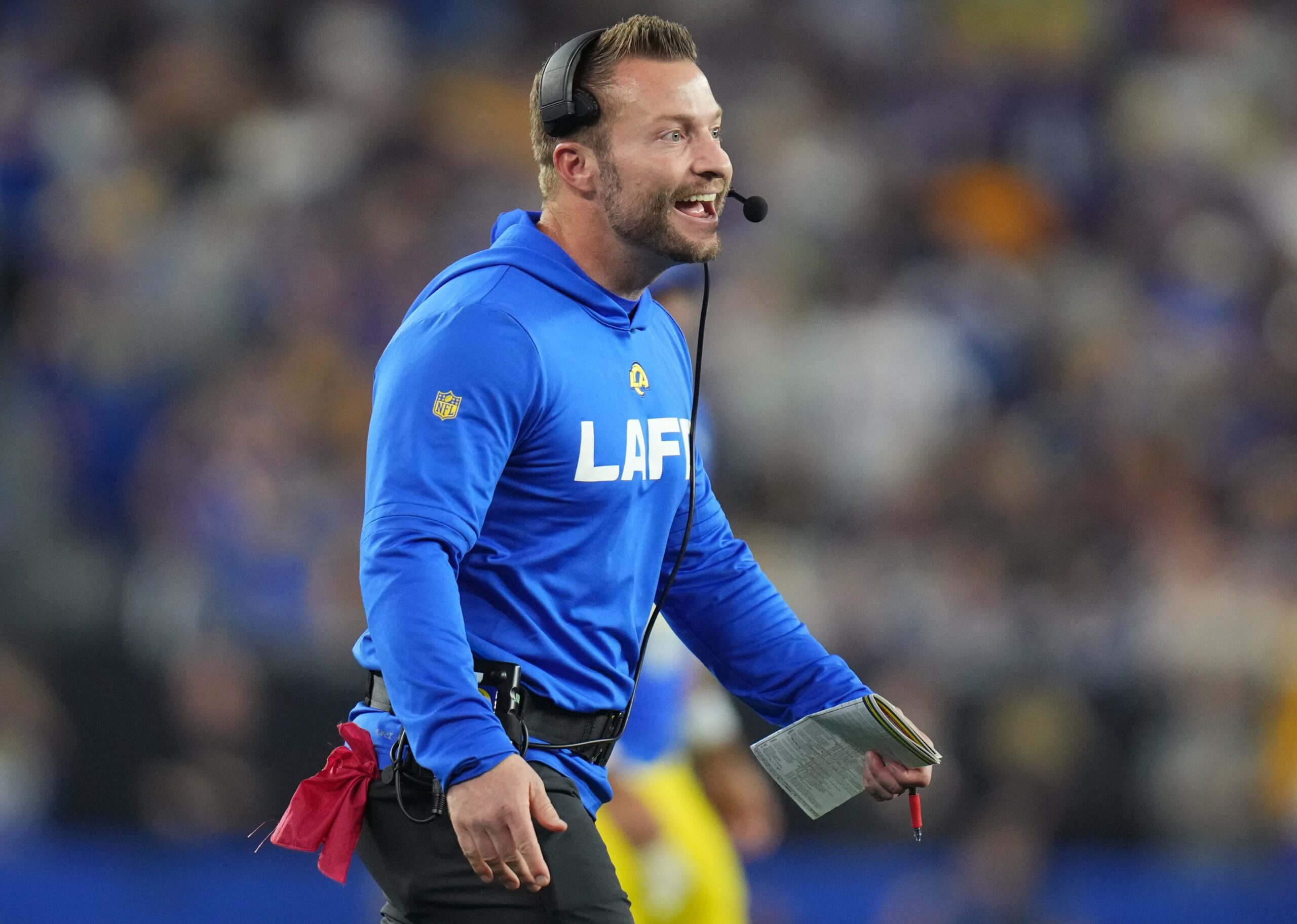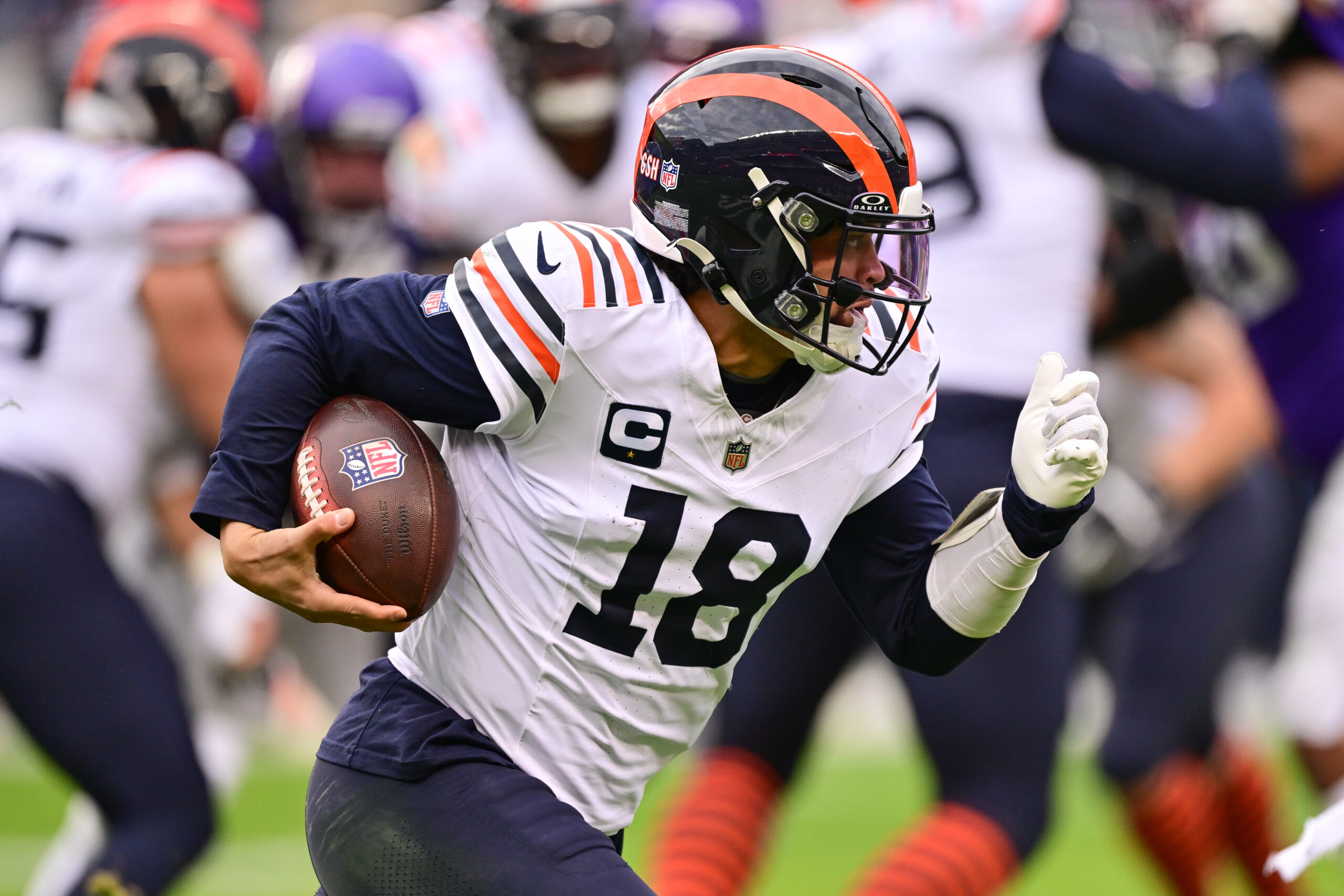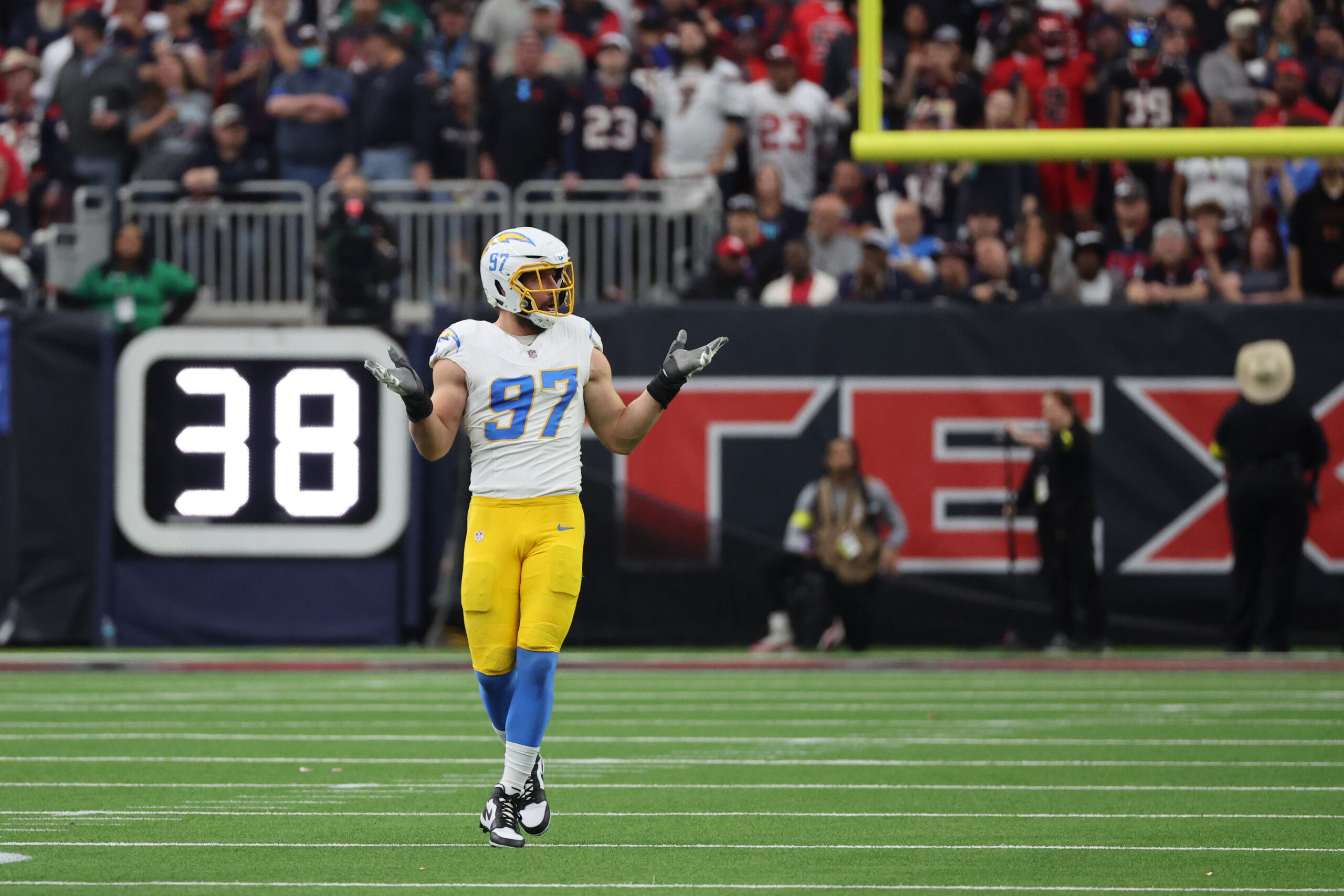NFL Analysis
5/27/24
8 min read
Is Tua Tagovailoa The Next $200 Million Quarterback?

When Jared Goff signed his four-year, $212 million extension with the Detroit Lions, the baseline was set for the second tier of quarterback contracts.
The “tier” is more of a reflection of the quality of play because the price is still near the top of the market. Goff’s $53 million per year average is second among quarterbacks, as is his three-year cash flow of $165 million. His $73 million signing bonus is a record.
While the merits of the second-tier quarterback contracts eclipsing $50 million per year can be debated, that’s where the market sits. With that line drawn, the question has turned to whether that price is conducive to good roster-building.
Can a quarterback who isn’t overwhelmingly the reason his team wins games be worth that much money while leaving enough to build a suitable roster around him?
Tua, Dolphins Got Next
Fair or not, the next quarterback to face this debate will be Tua Tagovailoa. The former fifth-overall pick is set to play 2024 on his fifth-year option. A deal likely will get done this offseason because most teams do not let former first-round picks play through the final year of their contracts.
Joe Burrow and Justin Herbert, the other quarterbacks taken early in the 2020 draft, were already paid. Burrow and Herbert signed extensions worth more than $200 million last offseason. Herbert’s average is $52.5 million annually, while Burrow leads the position at $55 million. Tagovailoa’s new deal will be somewhere in that range.
By production, Tagovailoa warrants that spot. During the past two seasons under Mike McDaniel, Tagovailoa is third among quarterbacks in EPA per play behind Brock Purdy and Dak Prescott, per TruMedia.
But it’s not just a question of production. If it was, Tagovailoa would unquestionably be considered one of the league’s top quarterbacks, and there would be little debate about his next contract.
Like Goff, questions surround Tagovailoa about how much the quarterback contributes to the offense's success. However, unlike Goff, the Miami Dolphins have built an offense that allows Tagovailoa’s strengths to help cover up the weaknesses rather than have the rest of the roster lift the quarterback.
Goff and Tagovailoa can struggle under pressure, so their teams structured their offenses to keep the quarterback away from it as much as possible. Detroit invested in one of the league’s best offensive lines and just rewarded RT Penei Sewell with a top-of-the-market extension. The Dolphins have the eighth-least cap space dedicated to the offensive line this season.
Dolphins Fast On the Draw
The way Miami gets around its offensive line and still features the lowest pressure rate in the league is by having the quickest passing game in the NFL. During the last two seasons, Tagovailoa’s average of 2.36 seconds to throw has been the lowest in the league.
His rate of 63.4 percent of throws under 2.5 seconds is behind only Burrow and Trevor Lawrence in that time. What makes Miami's version of the quick passing game different is how it still pushes the ball down the field.
On throws under 2.5 seconds, Tagovailoa’s aDOT is 6.4, more than half a yard more than the next-highest quarterback (5.8). On top of that, he’s third in EPA per play on those attempts.

The Dolphins get away with that partly because of the speed of WRs Tyreek Hill and Jaylen Waddle. Within 2.5 seconds of the snap, Miami’s receivers can already be down the field. It doesn’t work this way for most other offenses within 2.5 seconds of the snap.

Because of this and the evolving motions the Dolphins use to create space and open throwing lanes, many write off Tagovailoa’s contributions as a product of his environment. But there’s a case to be made that he plays a part in creating that environment rather than just being a beneficiary.
Few players get the ball out as quickly and accurately as Tagovailoa has during the past two seasons. The quick release allows the Dolphins to play how they do and protects the offensive line from sustaining blocks. A slower processor or release couldn't run this offense at this efficiency.
It wasn’t a large sample, but we saw Teddy Bridgewater get some run in this offense during the 2021 season. Bridgewater was a capable passer during his NFL career but the offense did not have the same explosion with the veteran behind center. Skylar Thompson also highlighted what an inexperienced quarterback would look like in this system.
Neither quarterback got the ball out as quickly as Tagovailoa or did it nearly as often. That led to pressure rates hovering around double Tagovailoa’s, which made everything else in the offense more difficult.

On only plays with Hill and Waddle on the field, Bridgewater and Thompson averaged more than 3.0 seconds to throw and faced pressure on more than 50 percent of their dropbacks while trying to push the ball down the field.
This isn’t the only offense Tagovailoa has made work. In 2021, the Dolphins decided the best way to get around the line and play to Tagovailoa’s strengths with only Waddle in the receiving corps was to spam RPOs. The offense was quick but in a more unwatchable fashion.
The throws were short, and the Dolphins rarely threw down the field. But because of Tagovailoa’s accuracy, the offense was around average instead of one of the worst in the league, which it could have been under worse quarterback play.
McDaniel's arrival brought an offense that built on the quarterback’s strengths and heavy vocal support. That continued through the past two seasons and into the offseason.
A Few Questions Remain
If there’s a holdup in this offense's sustainability, it’s the late-season collapses from the past two years. Because this offense can be so specifically fine-tuned, throwing off one aspect could sink the entire unit.
Two years ago it was Tagovailoa’s injuries. This past year the offensive line struggled, and there was constant pressure late in the season. That derailed the offense, and there weren’t enough counters to make up for it.
If there was another concern, it was Tagovailoa’s health. He had concussion issues in 2022 but made it through the 2023 season healthy. Last offseason, he bulked up to put on more muscle and absorb hits better. But this offseason, he reportedly dropped weight to be more mobile.
Scrambling will never be a big part of Tagovailoa’s game, but it could be part of the plan to make more things work out of structure if the protection breaks down in 2024.
That could make this offense even better.

Stability Likely in System, Pieces
There are “system” quarterbacks that fit like mittens, and there are many sizes of hands that can slide in and get the job. But the Tagovailoa-Dolphins fit is more like a glove. The offense helps, but the quarterback also plays a much larger part than given credit for.
The benefit of Miami’s current setup is that the key pieces won’t be going anywhere anytime soon. Hill is in his 30s, but Waddle still has two years left on his rookie deal, and unless there’s a catastrophe, McDaniel isn’t going anywhere.
This is part of a Dolphins team that started shedding salary this offseason to prepare for the next era. That will continue into 2025, a year in which the Dolphins are currently $11 million over the cap without a Tagovailoa contract on the books.
It would be tough to trust a younger, inexperienced quarterback to jump in and make this offense go immediately. There are probably only a few veterans who could lift this offense higher than what it's already been.
Prescott could be a free agent this offseason. Some suggest he could be"McDaniel's Matthew Stafford"—alluding to Sean McVay's changes with the Rams after trading Goff and replacing him with Stafford.
Holding out for that one possible player would be quite a risk. The most likely outcome is that Miami strikes a deal before the coming season.
A sticker price of more than $200 million should not shock anyone for a quarterback like Tagovailoa. With the current system in place in Miami, it wouldn’t be a shock if it works out, too.








